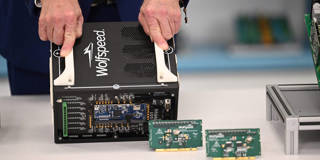Instead of lifting Donald Trump’s trade barriers, US President Joe Biden has fully embraced industrial policy, offering massive subsidies to domestic manufacturers. Although this might enhance manufacturing capacity in the short term, it also risks triggering a financially draining global subsidy war with no clear winners.
LONDON – To the dismay of many economists, US President Joe Biden’s administration has retained most of its predecessor’s tariffs and trade barriers. In fact, contrary to most analysts’ expectations, the United States has imposed additional protectionist measures, such as Biden’s “buy American” policies, resulting in higher costs for American consumers and taxpayers.
During Donald Trump’s presidency, the US imposed a 25% tariff on steel imports and a 10% tariff on imported aluminum. Trump’s administration initiated a trade war with China, withdrew from the Trans-Pacific Partnership (TPP) that former US Presidents George W. Bush and Barack Obama negotiated with 12 Pacific Rim countries, and “renegotiated” the North American Free Trade Agreement, rebranding it as the United States-Mexico-Canada Agreement.
Trump chose to take these and other actions unilaterally, even though pursuing a multilateral approach through the World Trade Organization would have been far more effective and less likely to harm US allies. The Biden administration, however, has gone even further, fully embracing industrial policy by enacting the $430 billion Inflation Reduction Act (IRA), which includes hundreds of billions of dollars in subsidies for green technologies and renewable energies, and the $280 billion CHIPS and Science Act, aimed at fostering a robust US semiconductor industry.

LONDON – To the dismay of many economists, US President Joe Biden’s administration has retained most of its predecessor’s tariffs and trade barriers. In fact, contrary to most analysts’ expectations, the United States has imposed additional protectionist measures, such as Biden’s “buy American” policies, resulting in higher costs for American consumers and taxpayers.
During Donald Trump’s presidency, the US imposed a 25% tariff on steel imports and a 10% tariff on imported aluminum. Trump’s administration initiated a trade war with China, withdrew from the Trans-Pacific Partnership (TPP) that former US Presidents George W. Bush and Barack Obama negotiated with 12 Pacific Rim countries, and “renegotiated” the North American Free Trade Agreement, rebranding it as the United States-Mexico-Canada Agreement.
Trump chose to take these and other actions unilaterally, even though pursuing a multilateral approach through the World Trade Organization would have been far more effective and less likely to harm US allies. The Biden administration, however, has gone even further, fully embracing industrial policy by enacting the $430 billion Inflation Reduction Act (IRA), which includes hundreds of billions of dollars in subsidies for green technologies and renewable energies, and the $280 billion CHIPS and Science Act, aimed at fostering a robust US semiconductor industry.